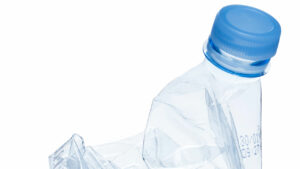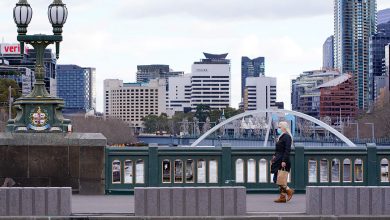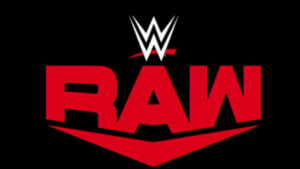Discerning bottling

About 50 years ago, most beverages sold locally came in reusable glass bottles. Soda and beer also came in bottles, and required a “deposit” when purchased, for bottle return. Plastic containers for beverages were uncommon here until Mr. Juicy came along locally in the mid-1970s. Around the same time, Sunkist started selling juice locally in plastic coated paper cartons.
Then the beverage industry shifted to carton bricks for UHT and chocolate milk, taking over from glass bottles. Soda and beer also became available in aluminum cans, then soda started using PET (polyethylene terephthalate) bottles as well. There were no “problems” associated with these plastic bottles back then. Until bottled water became widely available.
Now, plastic beverage containers and plastic bags are said to compose much of our ocean waste. Reusable glass or aluminum, or carton or metal beverage containers are heralded as the more environment-friendly beverage packaging alternatives. But sustainability and climate change have so many facets that, frankly, I am now unsure which packaging is truly better than plastic.
“Which is the best option for the environment?” asks Jane Turner in a commentary for online publication Ethical Consumer (www.ethicalconsumer.org), which is published by a nonprofit, multistakeholder cooperative founded in 1989 and based in Manchester, UK. “It’s a tricky question and depends on your priorities — some are better in terms of carbon whilst others are better in terms of reuse, recycling, and waste.”
“Glass and aluminum can both be ‘closed loop’ recycled — turned back into the same product, a potentially limitless number of times. Plastic, however, degrades each time you melt it. Although plastic bottles and cartons can be recycled, it is thus into a lower quality material, and only so many cycles are possible,” she adds.
Having considered several factors, and assessing the pros and cons of each packaging type, she says that picking the best is difficult as “there is more than one issue at stake.” But, in her opinion, “in terms of climate change, Tetra Pak cartons are the winner, followed by plastic, then aluminum, and glass is the worst.”
But, “in terms of plastic pollution and the ability to do closed loop recycling, glass and aluminum are the winners. And as you recycle them more times, their carbon emissions start to fall back down towards cartons and plastic,” she adds.
Beverage cartons are ahead in terms of lowest carbon footprint because they “take much less energy to make than other forms of packaging, and that makes them the winner in climate terms… They are also lighter to transport and because empty Tetra Paks can be transported flat, you can also fit far more into one shipment than you could glass bottles, plus, when filled, they are regular shaped and therefore more space efficient,” Turner notes.
Beverage cartons can be recycled, but not as much as glass bottles or aluminum cans, she adds. And that means every unrecycled beverage carton also come with plastic and aluminum waste in landfills. Beverage cartons are made from board or card layered with plastic. And cartons made to preserve liquids without refrigeration also have a thin layer of aluminum.
In the case of glass bottles, they “take a lot of energy to make, and also to transport because of their weight,” says Turner. “Both of these contribute to glass’ carbon emissions being the highest of all the packaging types, even when you take into account the likely amount of recycling that will happen,” she adds. So, in terms of climate change, glass bottles are “the worst,” she says.
As for aluminum cans for beverages, Turner adds that “the original manufacture of aluminum involves large amounts of energy use for smelting and the strip mining of bauxite, which is environmentally destructive… Aluminum cans thus have a high environmental and carbon footprint at first, but it does fall dramatically when they are recycled. Recycling an aluminum can only uses 8% of the energy required to produce a new one.”
So, where does this put plastic bottles? “PET bottles take much more energy to make than Tetra Paks, and their carbon footprint is much higher… They can’t be reused, as the sterilization would damage the plastic. You can recycle them but, in the best-case scenario in terms of the amount of recycling likely to happen, their carbon footprint only attains levels similar to the absolute worst-case scenario for Tetra Paks,” Turner adds.
I am sure that plastic bottle makers and users also have much to say about their choice of packaging. Obviously, Turner’s commentary is not the final authority on the matter. But I support her perspective that the matter should be assessed in terms of carbon footprint, and thus climate change, and in terms of reuse, recycling, and waste. After all, there are many factors to consider here, and not just the amount of waste that plastic bottling produces.
The same can be argued in the case of electric vehicles. As governments calibrate regulation to “encourage” the shift to EVs, and with market conditions seemingly validating the urgency of the shift, the matter should also be seen not solely in the light of carbon footprint. Reuse, recycling, and waste should also be material to the discussion.
Pushing this further, even the shift to renewable energy should be seen in similar light. After all, even renewables generate waste — used or broken solar panels, old wind turbines, etc. Even used batteries from EVs are not necessarily reusable or recyclable. Any production, or any consumption, has a carbon footprint, impacts the environment, and produces waste.
Moreover, consider all the effort and resources needed to extract minerals and materials used in the production of beverage containers, solar panels, wind turbines, and all electrical and electronic components and batteries of EVs. Most everything has at least one component coming from extractive industries in some way.
Simple arguments no longer make the grade. At every turn, there are decisions and tradeoffs to be made, by producers, regulators, and consumers. Consumers need to know more about the products they buy, how they are produced, and how they can be reused or recycled, and be more discerning in making purchases.
Marvin Tort is a former managing editor of BusinessWorld, and a former chairman of the Philippine Press Council




